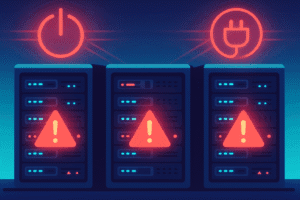How to Secure Your Devices and Stay Private Online in 2025
In today’s hyper-connected world, your digital privacy is only as strong as your weakest device. With the rise of AI assistants, smart home gadgets, and a growing number of online accounts, 2025 demands more than just antivirus software — it requires a privacy-first mindset and proactive steps to secure every corner of your digital life. So follow this guide on How to Secure Your Devices and Stay Private Online in 2025.
Why Privacy and Security Matter More Than Ever
The landscape of digital threats has evolved. From deepfake scams to Wi-Fi eavesdropping on IoT devices, cybercriminals in 2025 are armed with sophisticated tools. Meanwhile, tech companies gather vast amounts of user data, often by default.
“Privacy isn’t dead — it’s just under siege. Taking control means acting before the damage is done.”
Practical Steps to Secure Your Devices
1. Set Strong, Unique Passwords for Everything
Use a password manager like Bitwarden or 1Password to create and store unique passwords. Avoid reusing them, and always enable two-factor authentication (2FA) wherever possible.
2. Update Everything — Yes, Everything
Security patches are your first defense against vulnerabilities. Enable automatic updates on:
- Smartphones
- Computers
- Smart TVs
- Routers
- IoT devices
Hackers often exploit known vulnerabilities in outdated firmware.
3. Use a VPN — But Choose Wisely
A trustworthy VPN encrypts your traffic and hides your location. For privacy, avoid free VPNs that log user data. Reputable options include:
Tip: Pair your VPN with a privacy-focused browser like Brave or Firefox with hardened settings.
4. Lock Down Your Home Network
Your Wi-Fi router is the front door to your digital home. To secure it:
- Change the default login and SSID name
- Use WPA3 encryption
- Disable WPS
- Update its firmware regularly
Consider a mesh router with built-in security like Eero Secure or TP-Link HomeShield.
5. Ditch the Defaults on Smart Devices
Smart bulbs, cameras, speakers — they’re all convenient, but potentially risky.
- Turn off unused features like remote access
- Rename devices with generic IDs
- Routinely check privacy settings in device apps
Take Control of Your Online Footprint
1. Use Private Browsing Alternatives
Switch from Google to DuckDuckGo or Startpage. Also consider:
- Firefox Focus for mobile
- Tor Browser for anonymity
2. Delete Old Accounts
Unused accounts can become data leaks waiting to happen. Use services like JustDelete.me to find out how to remove them.
3. Check if You’ve Been Compromised
Regularly scan your emails and usernames at Have I Been Pwned. If any accounts appear, change passwords immediately.
Mindset Is the New Firewall
Digital hygiene isn’t a one-time task — it’s a habit.
Think before you click. Be cautious of:
- Unsolicited messages or links
- App permissions that don’t align with app functions
- Free tools that monetize your data
“If you’re not paying for the product, you are the product.”
By taking these steps, you’ll not only secure your devices and stay private online in 2025, but also develop a mindset of digital resilience in a world where data is the new currency.
Related Content
Share this post:














Post Comment